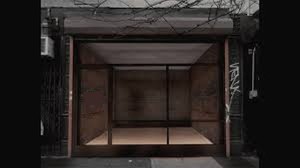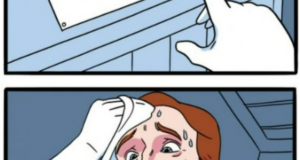The facility gets few visitors, as it has a limited budget to advertise its activities, and that traffic is mostly walk-ins looking for a bathroom.
 Jerusalem, September 15 – Passersby and workers in the downtown area of Israel’s capital have occasionally wondered about the establishment on Jaffa Road that has a perpetually empty display window and interior, little realizing it is not the location of a store, but a gallery of artifacts and documents that are the product of the Arab culture native to the Holy Land.
Jerusalem, September 15 – Passersby and workers in the downtown area of Israel’s capital have occasionally wondered about the establishment on Jaffa Road that has a perpetually empty display window and interior, little realizing it is not the location of a store, but a gallery of artifacts and documents that are the product of the Arab culture native to the Holy Land.
The Palestinian Historical Artifacts and Knowledge Emporium (PHAKE), located in a nondescript building near the bustling intersection of Jaffa Road and King George V Street, boasts that it contains a comprehensive collection of the evidence for Palestinian Arab culture as indigenous to what became Israel in 1948. PHAKE, a project of international philanthropists and collectors, opened at the location in 2012.
Curator Daral Islam told a reporter the facility gets few visitors, as it has a limited budget to advertise its activities, and that traffic is mostly walk-ins looking for a bathroom. Mr. Islam spends most of his time looking after the precious artifacts in his care, most notably a picture frame in which people claim a map of Palestine as a nation once rested, and a collection of British-Mandate-Era postage stamps with the Hebrew words “Land of Israel” or “Palestina” rubbed out.
“I actually like the quiet,” explained Islam. “I’m an academic at heart, which means I prefer to stay away from ideas that challenge my world view, so the low number of visitors keeps me in my comfort zone.” He accepted the position when he saw it advertised in an academic journal, and the 15-square-meter former storefront provides him with a cozy setting in which to read the works of scholars such as Edward Said, David Irving, Rashid Khalidi, and Mahmoud Abbas.
In the first year of its operation PHAKE attracted a trickle of schoolchildren, mostly from the Tel Aviv area, but those museumgoers eventually stopped when organizers discovered the facility cannot hold more than a handful of people at a time, and lacks a quantity of exhibits and items to keep even curious visitors occupied for more than fifteen minutes.
“I’ve been in there, but only by mistake,” said a shoe salesman who works three doors down. “It was a rainy day and I absentmindedly entered the wrong door to get out of the rain. Weird place. All this time I thought it was a storefront that no one had rented, but it turns out there’s been a museum there for four years. Strange, empty place. Like it’s trying too hard to be something it never was.”
Please support our work through Patreon.




